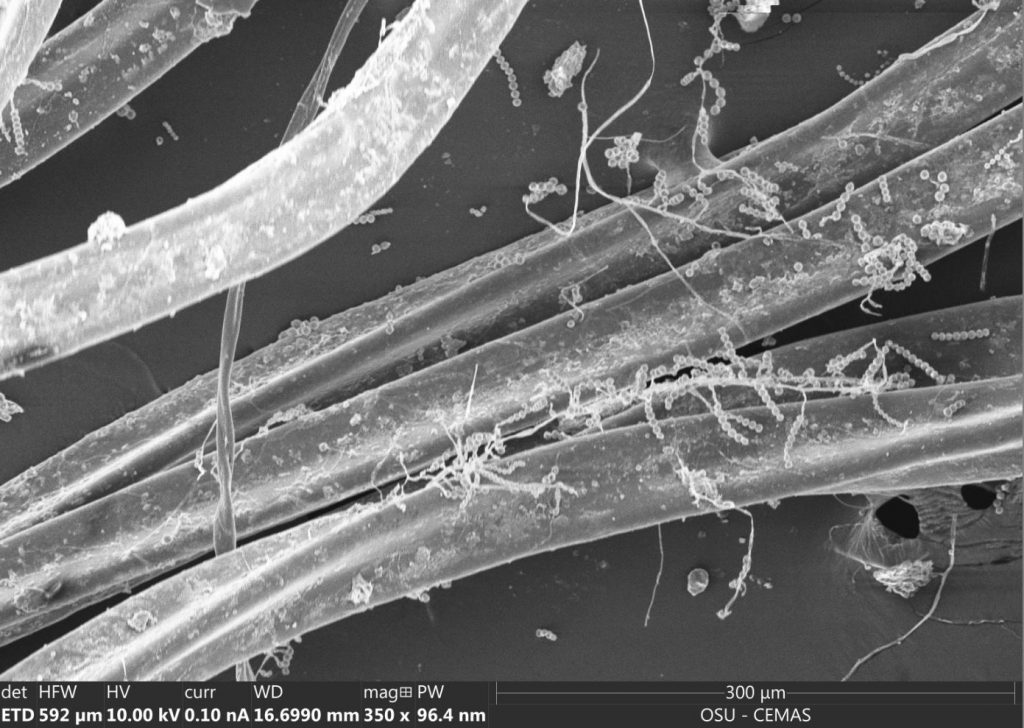We are pleased to announce the publication of our manuscript titled “Modeling microbial growth in carpet dust exposed to diurnal variations in relative humidity using the “Time-of-Wetness” framework” in the journal Indoor Air.

This work is a culmination of research investigating how changes in relative humidity impact microbial growth in carpet dust. Our related study was recently completed which found that moisture is typically the most important factor contributing to fungal growth in carpet. Carpets can trap dust and provide a reservoir for microbial growth. Resuspension of this dust contributes to human microbial exposures and may be associated with increasing asthma exacerbation and fungal allergen exposures.
This particular study was originally inspired by a 2014 policy modeling paper that predicted pediatric asthma outcomes associated with building interventions. A more robust model of fungal growth in dust under different moisture conditions could provide an opportunity for increasing accuracy in future predictions such as this important simulation model. Such a model also has applications at the individual level to better understand where growth is likely to occur.
In this study, the “time-of-wetness” framework was utilized to model microbial growth in carpet, as this has been used previously to model fungal growth in drywall. This framework predicts the relative growth rate of fungus by determining the fraction of time the relative humidity is above the 80% critical growth threshold. Carpet and dust were collected from 19 homes across Ohio, USA, and exposed to varying relative humidity conditions. We then measured microbial concentration and species composition.
Our study found that even after short (6 hour), repeated periods of elevated (>80%) relative humidity, fungal growth in carpet was sustained. These conditions could potentially result from a showering event or other similar occurrences in homes, even if the typical relative humidity levels are within the EPA recommended range of 30-50%.
The results also shed light on some of the reasons it has been difficult to find a microbial signature consistently associated with moisture in a home. The specific home that the sample originated from was determined to be a more important driver of species composition compared to moisture levels. Within individual homes however, moisture was found to be the dominant driver of species composition. This indicates that determining a specific species or group of species as an indicator for mold growth may be challenging.
This work can inform both population-level and individual-level analysis of fungal exposures in homes under varying relative humidity conditions.
Author information:
Sarah R. Haines
PhD Candidate, The Ohio State University
Twitter: @SarahRHaines
Jeffrey A. Siegel
Professor, University of Toronto
Twitter: @IAQinGWN
Karen C. Dannemiller
Assistant Professor, The Ohio State University
Twitter: @KarenCDannemiller
Website: ieq.engineering.osu.edu
Awesome, congrats Sarah! I can’t wait to read it!